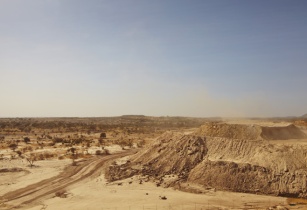The Select Committee on Land and Mineral Resources in South Africa stepped up the heat on gold miner Sibanye-Stillwater, calling for “harsher consequences” after seven workers died from an accident at its Masakhane mine, Driefontein operations
 13 workers were trapped at Sibanye-Stillwater’s Masakhane mine. (Image source: 80355610/Adobe Stock)
13 workers were trapped at Sibanye-Stillwater’s Masakhane mine. (Image source: 80355610/Adobe Stock)
The committee called for harsher consequences if it is found that the company neglected safety measures which could have protected workers during seismic events.
Last week, the South Africa-based company said 13 mine workers had been trapped at its Masakhane mine.
Six workers were later rescued but seven of the trapped workers died from injuries sustained during the accident.
“Although seismic events are a course of nature, it is high time that mining companies face serious consequences for neglecting measures for detecting early warning signs. Investigations on the accident should seek to establish the extent to which priority was given to health and safety at the mine,” said Olefile Sefako, chairperson of the committee.
“As government and South Africans at large, our thoughts and prayers are with the families of the deceased workers, among whom are workers from neighbouring states including Mozambique,” said President Cyril Ramaphosa.
“We also offer our best wishes to workers who have been directly or indirectly affected by this disaster, which should move the mining industry and government to jointly find ways to do all we can to protect our nation’s most valuable resource – the workers who are at the heart of our economy,” he added.
In February, about 1,000 miners were trapped in Sibanye-Stillwater’s Beatrix gold mine for nearly a day, raising questions about the company’s record on mine safety.
By the end of March, 22 people had been killed in South Africa’s mines, according to the Department of Mineral Resources.
Last year, 88 people died in South Africa’s mines, higher than 2016, when 73 people lost their lives in incidents related to mine safety.




